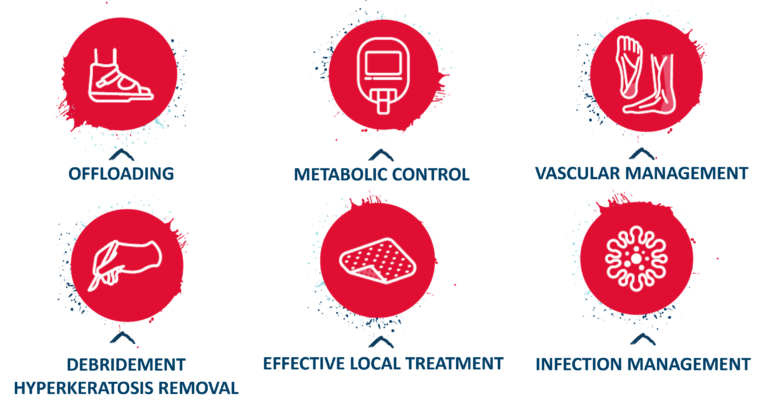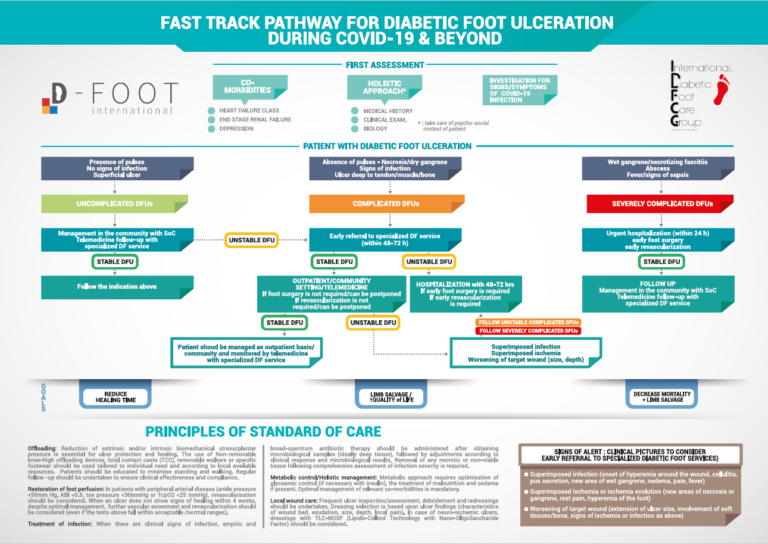
To fulfill its mission as The Healing Company, Urgo Medical has made diabetic foot ulcer (DFU) a key priority to support clinicians and patients to prevent, diagnose, refer, and manage patients presenting diabetic foot ulcerations, with the aim to avoid complications such as infection, amputation or even death.
Among the 537 million patients estimated to be living with diabetes in 20211, ¼ will potentially develop a foot ulcer2. More than half of those Diabetic Foot Ulcers will get infected3, resulting in life threatening consequences : every 20 seconds, a limb is lost somewhere in the world as a consequence of diabetes4. It is estimated that 70% of amputated patients following a Diabetic Foot Ulcer will not be alive in 5 years5.

To avoid these complications, DFUs must be diagnosed, assessed and referred to a specialized setting as soon as possible by following the international recommendations to refer patients as shown in the Fast Track Pathway developed by D-Foot International and the IDFCG. Every day counts !
A holistic standard of care will be put in place by a multidisciplinary team :

- Offloading, to take the weight off the foot
- Vascular assessment and restoration of foot perfusion if necessary
- Infection management
- Glycemic control
- Local wound care : debridement to remove hyperkeratosis and local treatment
Patients with diabetes are at risk of delayed healing from day 1 and therefore their wounds must be treated from the start with an effective local treatment managing local risk factors like elevated Mixed Metalloproteinases (MMPs) and recurrent slough, in the light of IWGDF international recommendations (2019).
To learn more about diabetic patient risk factors to develop a DFU, how to recognize alarm signs, to refer patients to a specialized setting and adequately manage a DFU, visit our Save Feet Save Lives DFU awareness campaign website at www.savefeetsavelives.com and our Urgo Medical Education platform.
To avoid ulcerations to appear, patients can follow simple prevention steps and learn how to recognize alarm signs on the Save Feet Save Lives patient website : www.savefeetsavelives.com/patients


